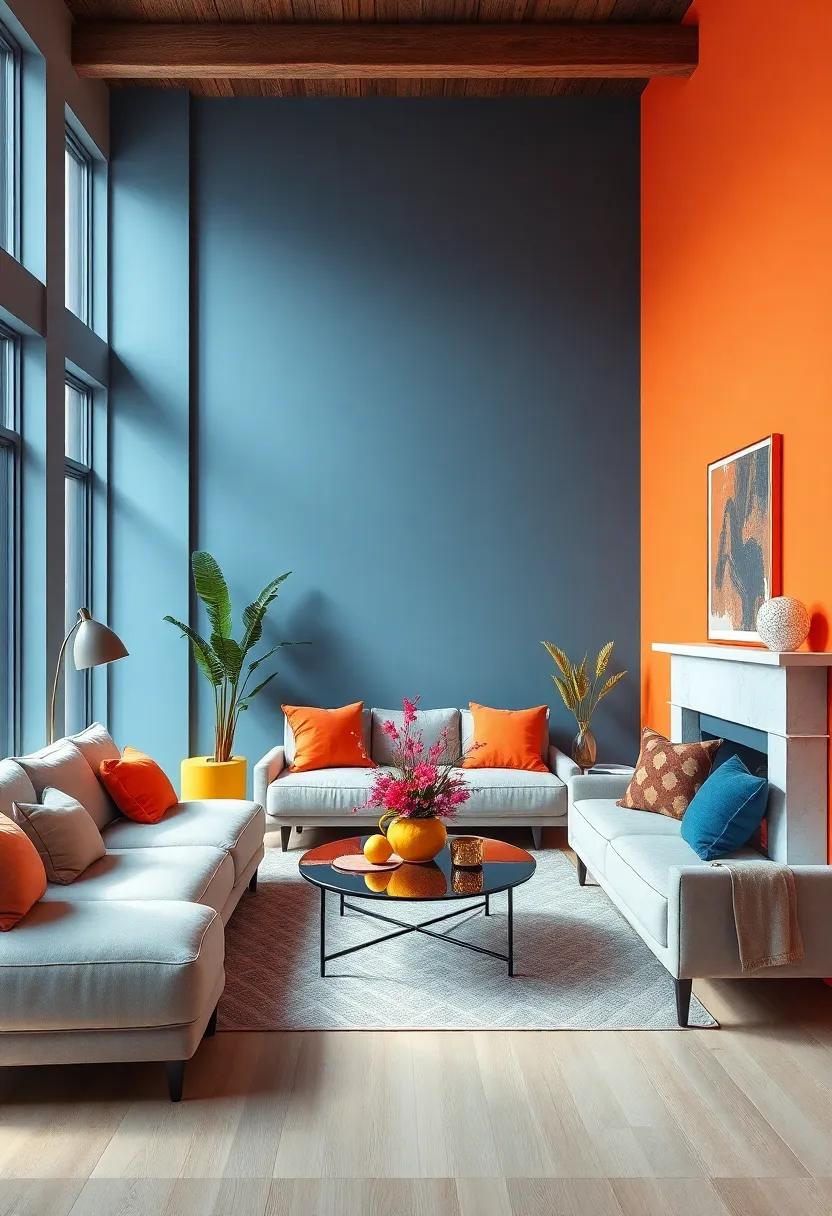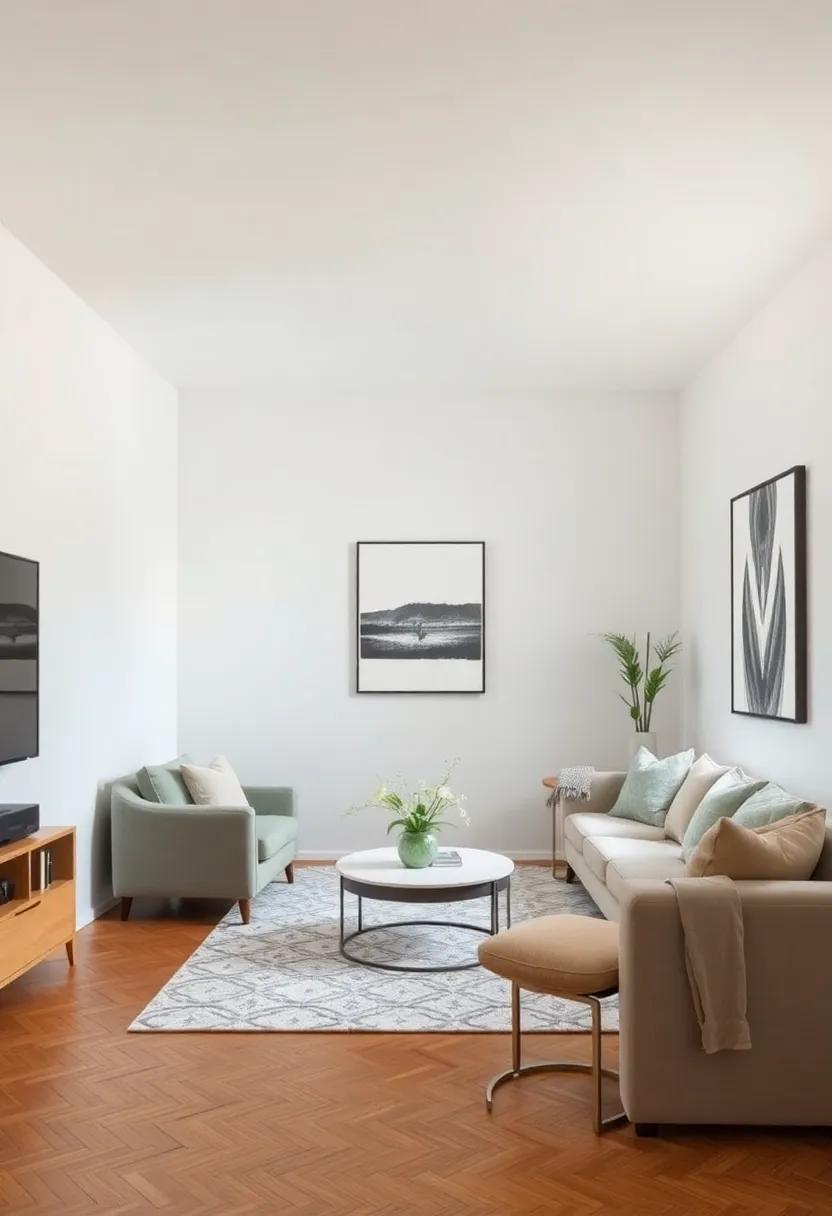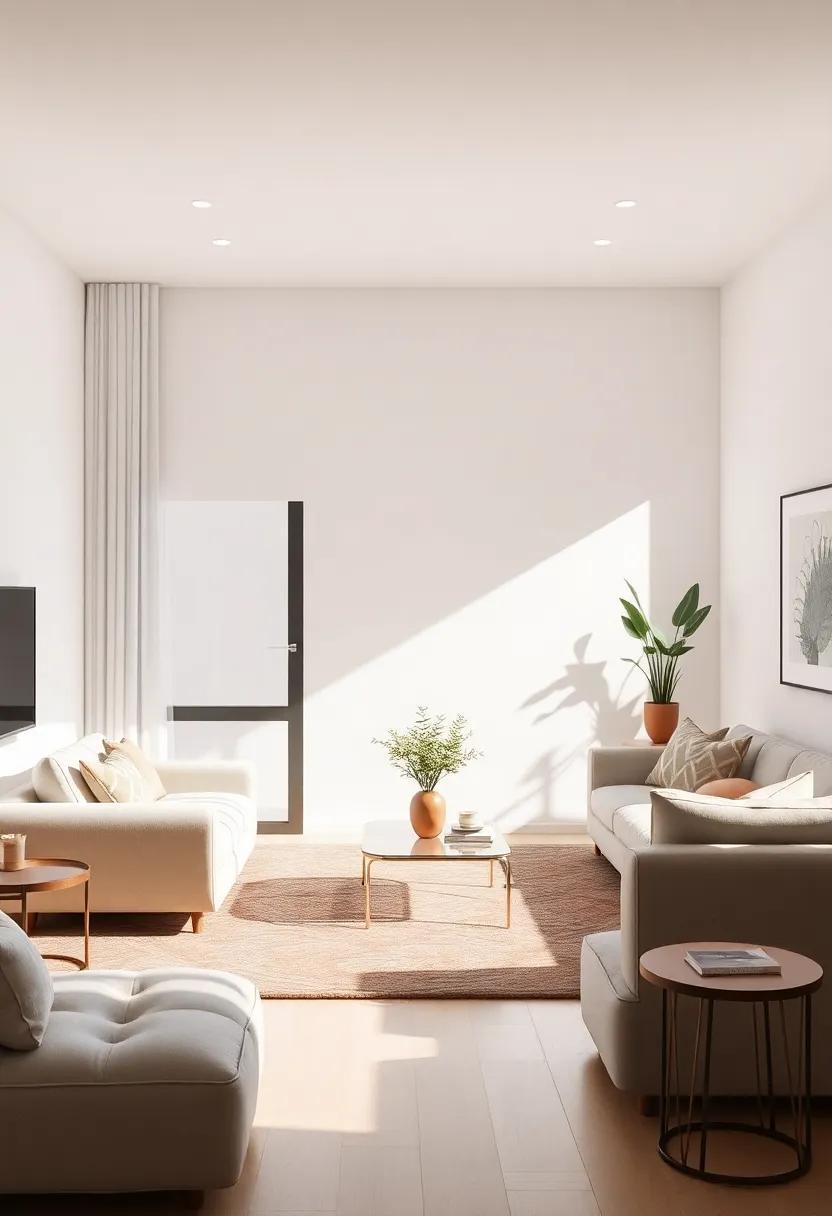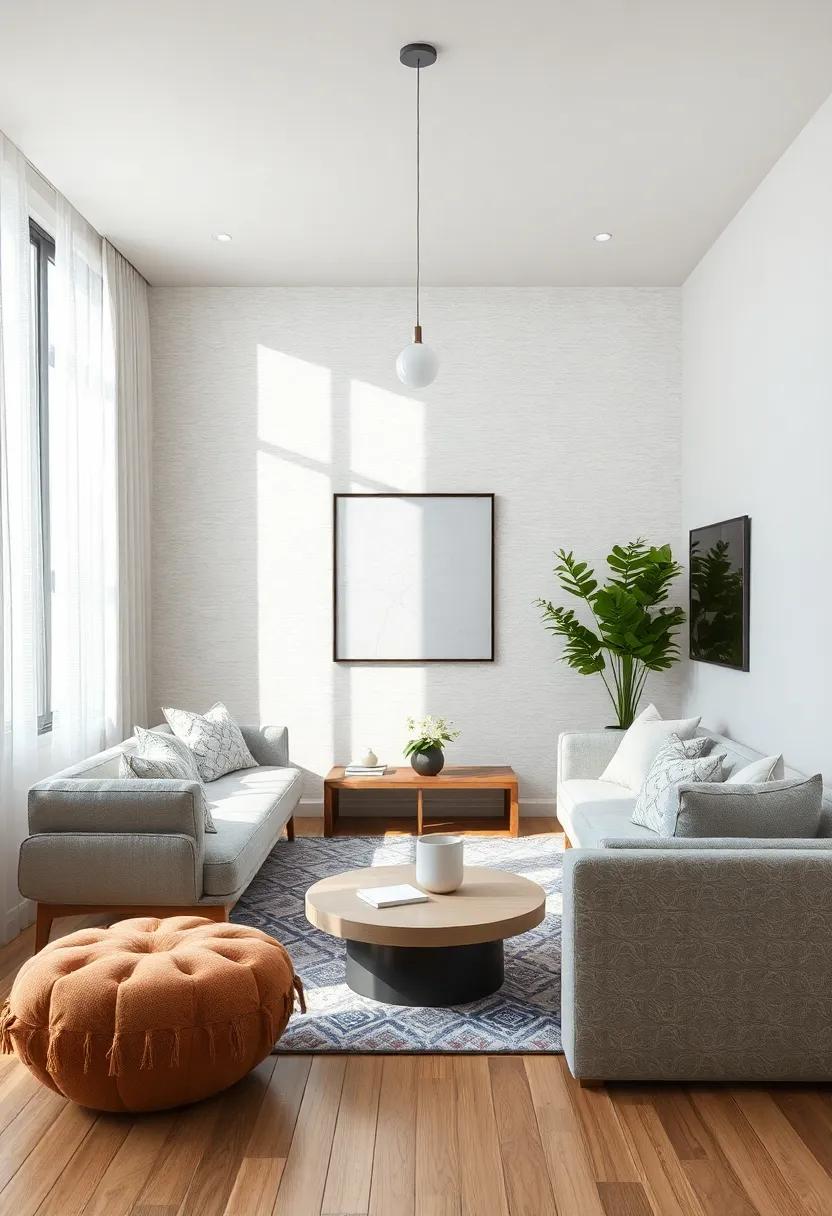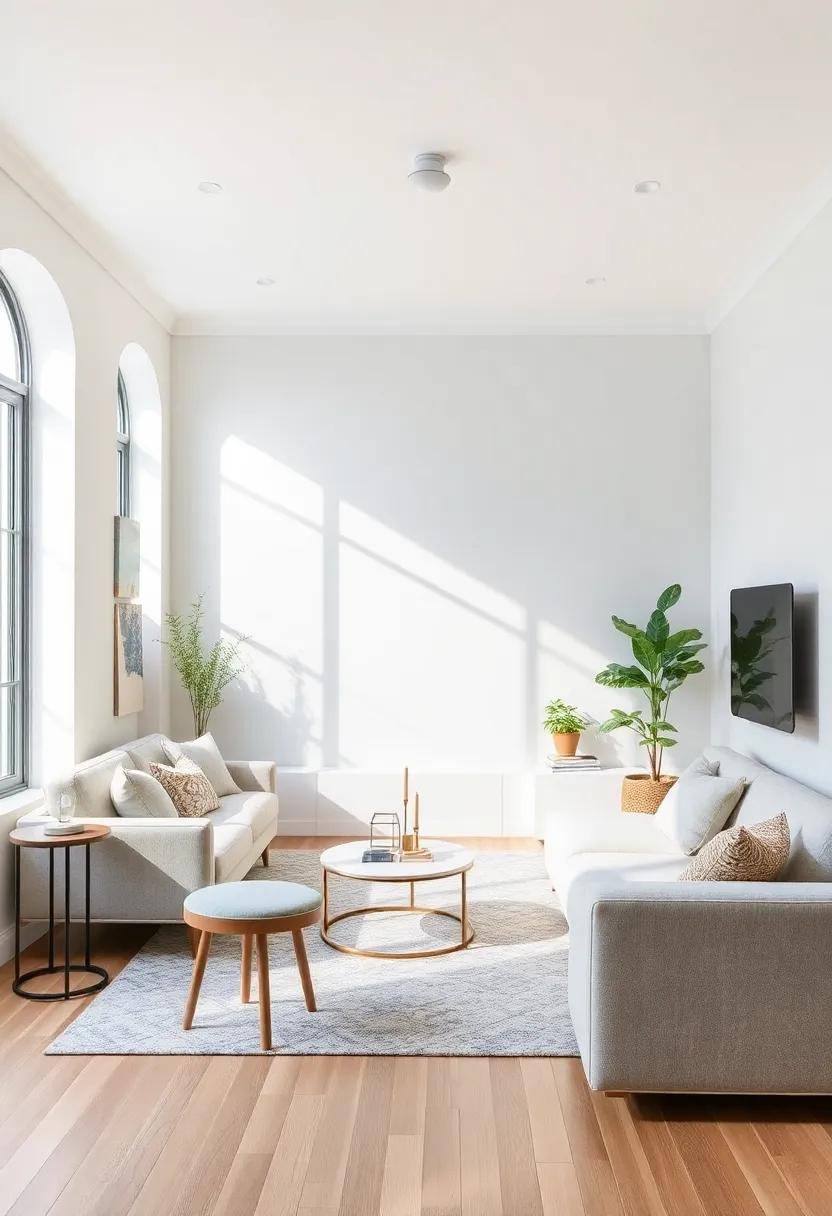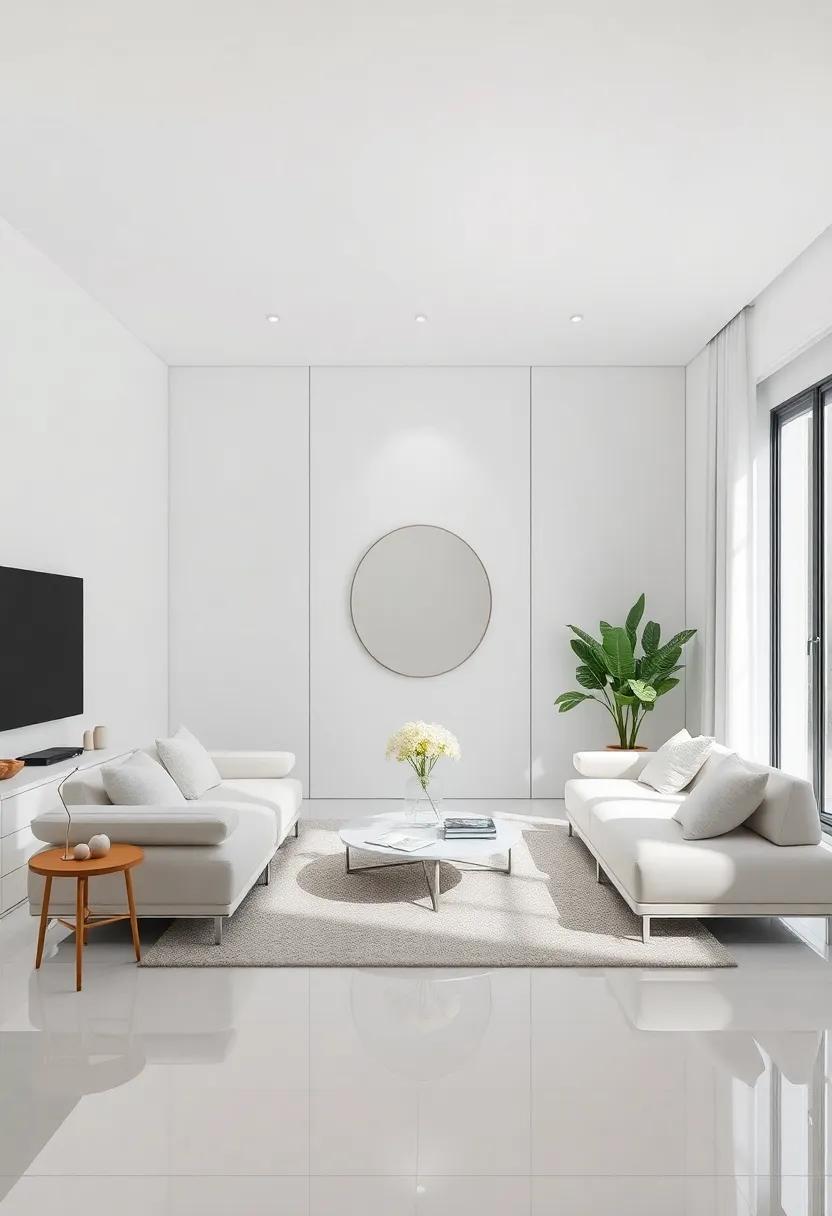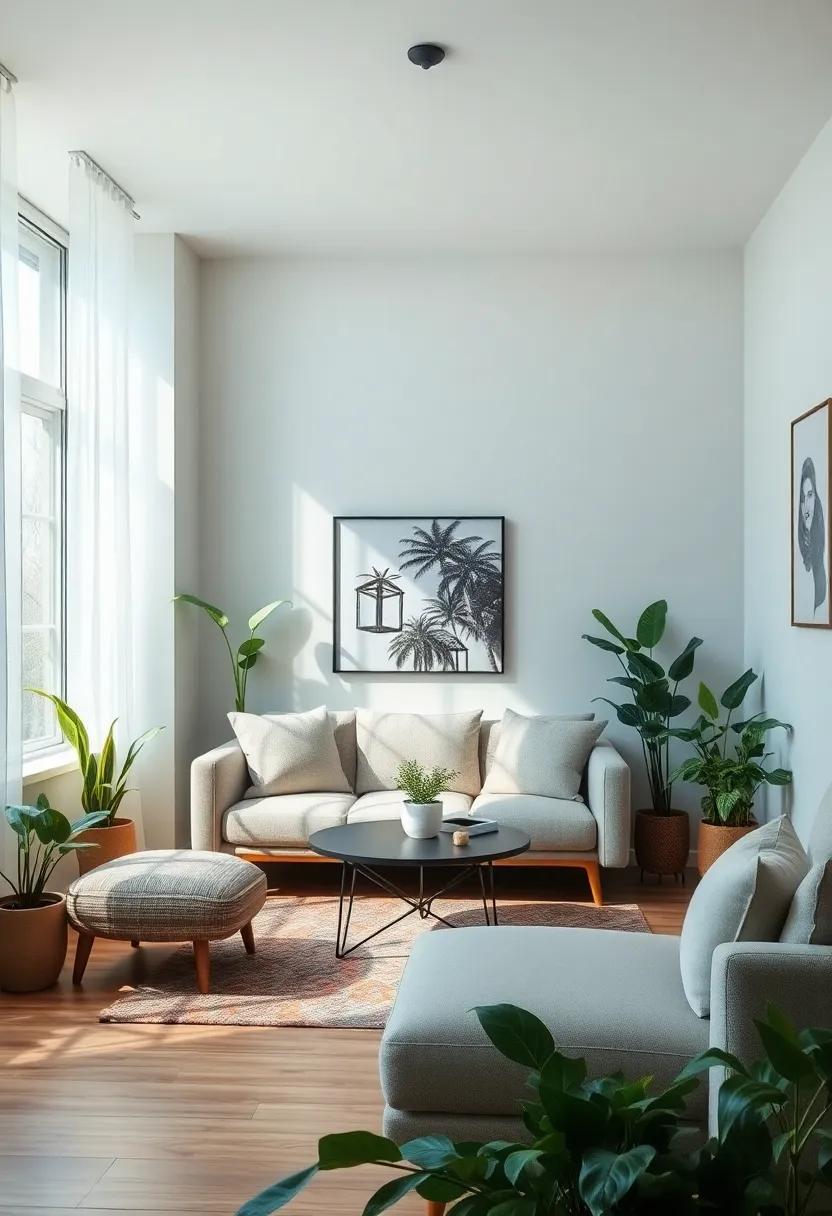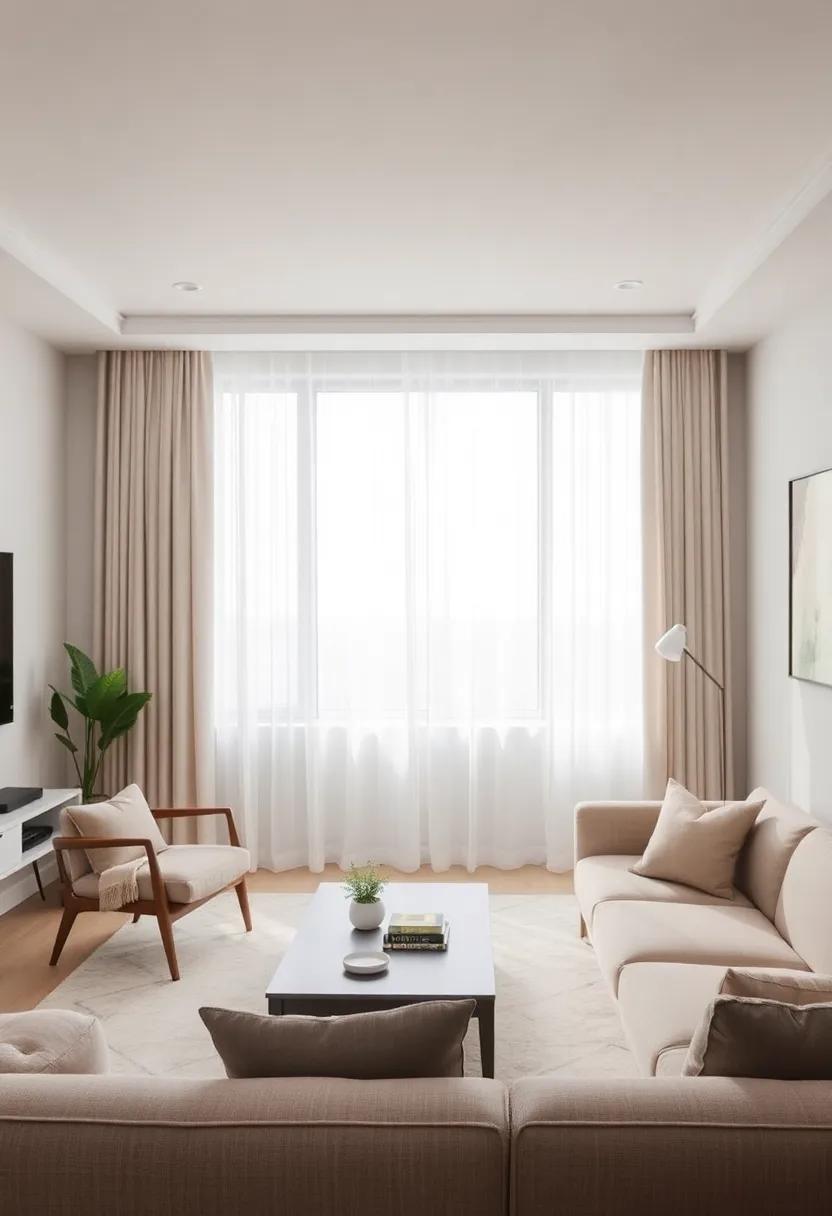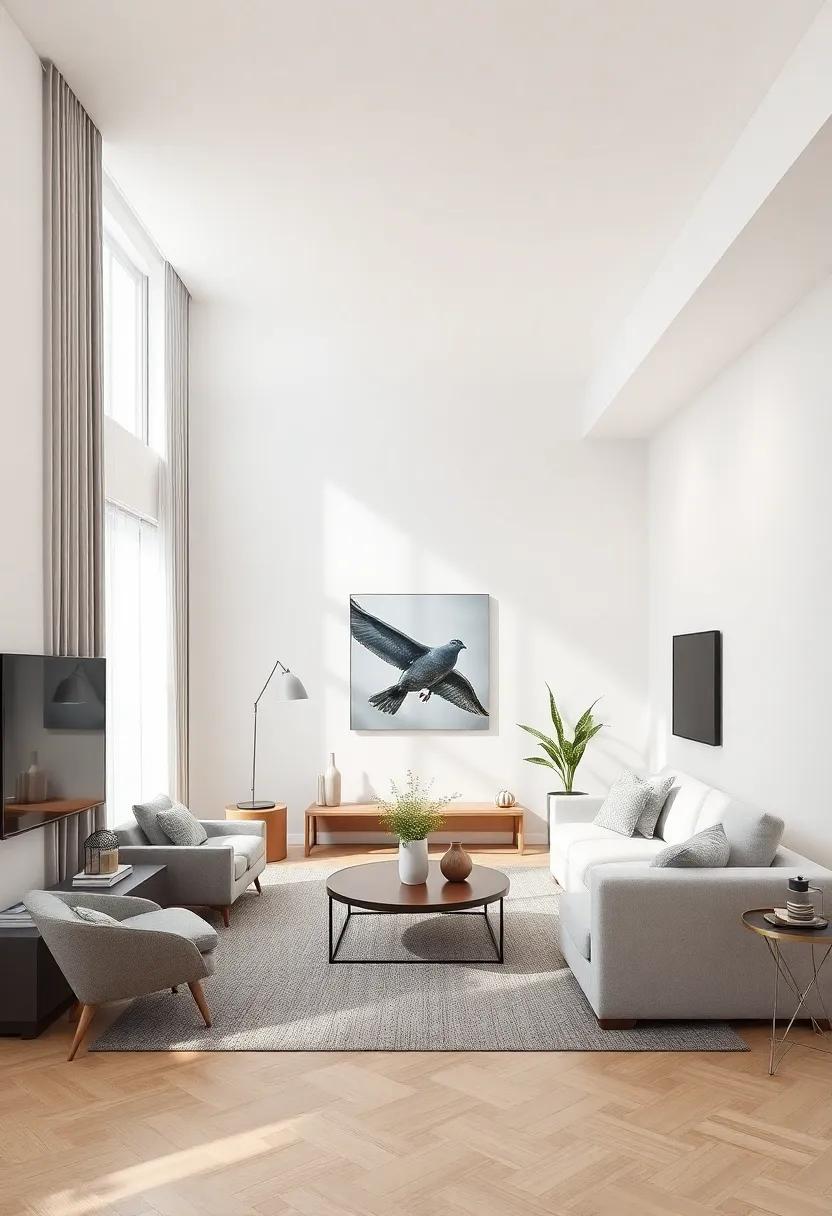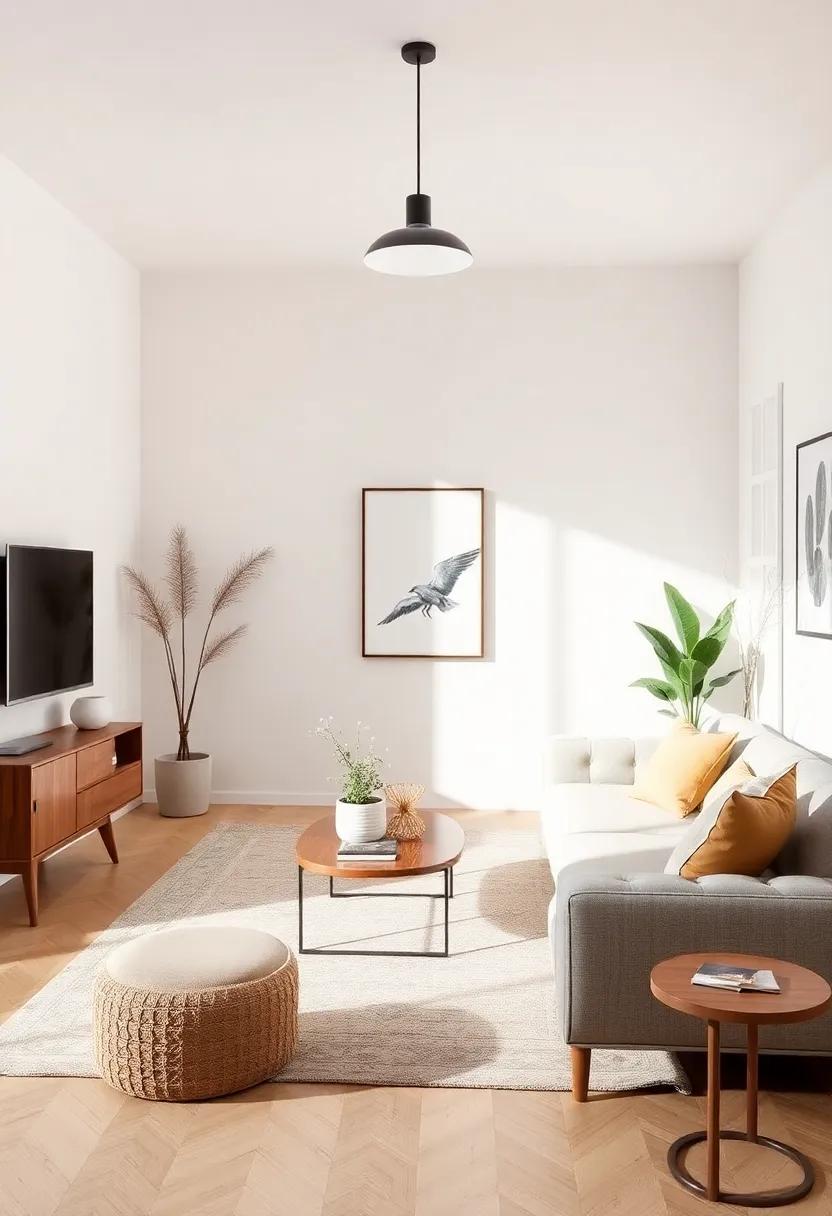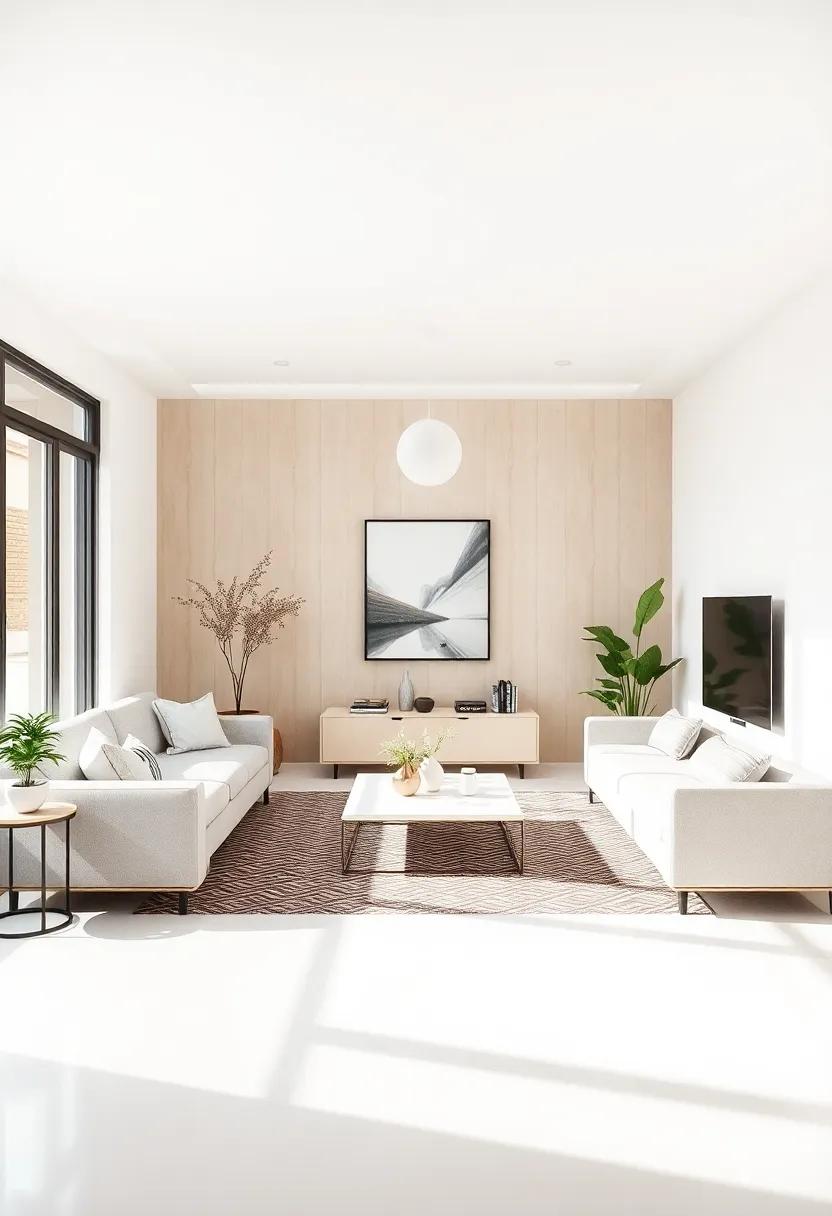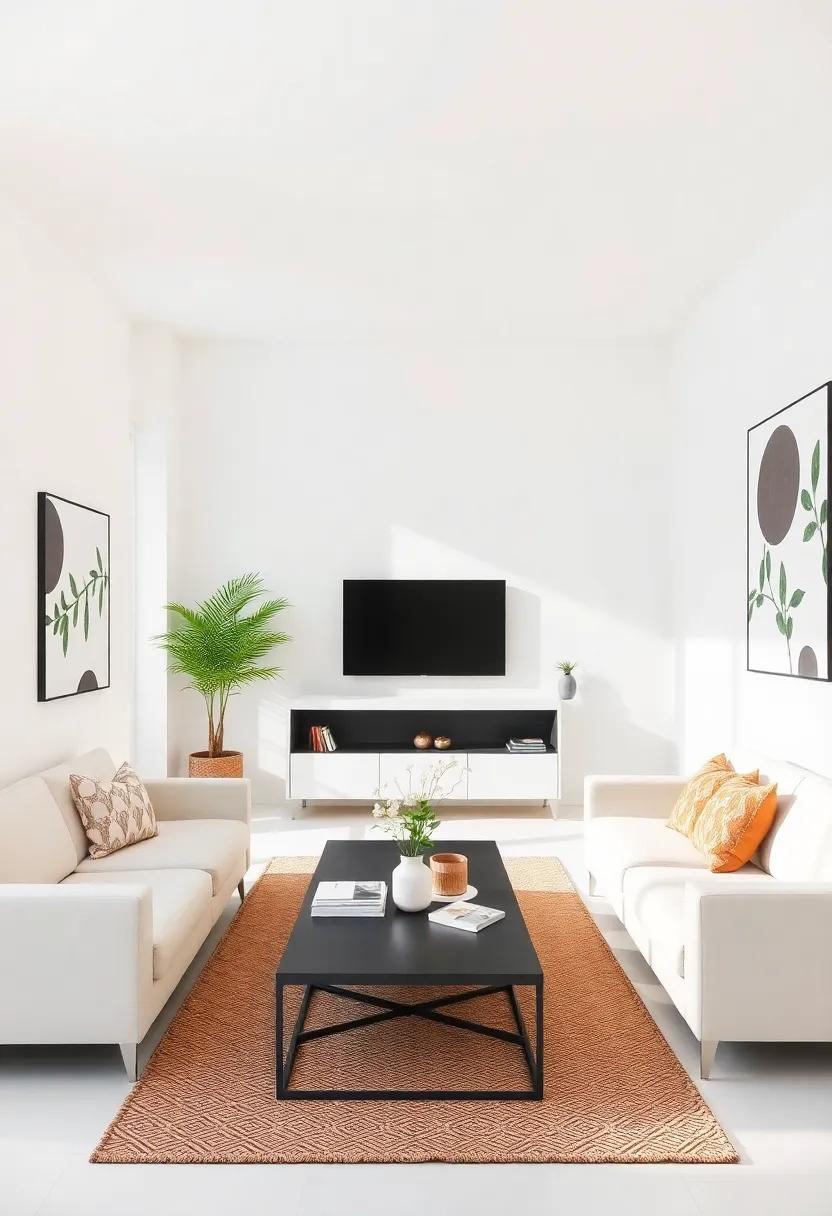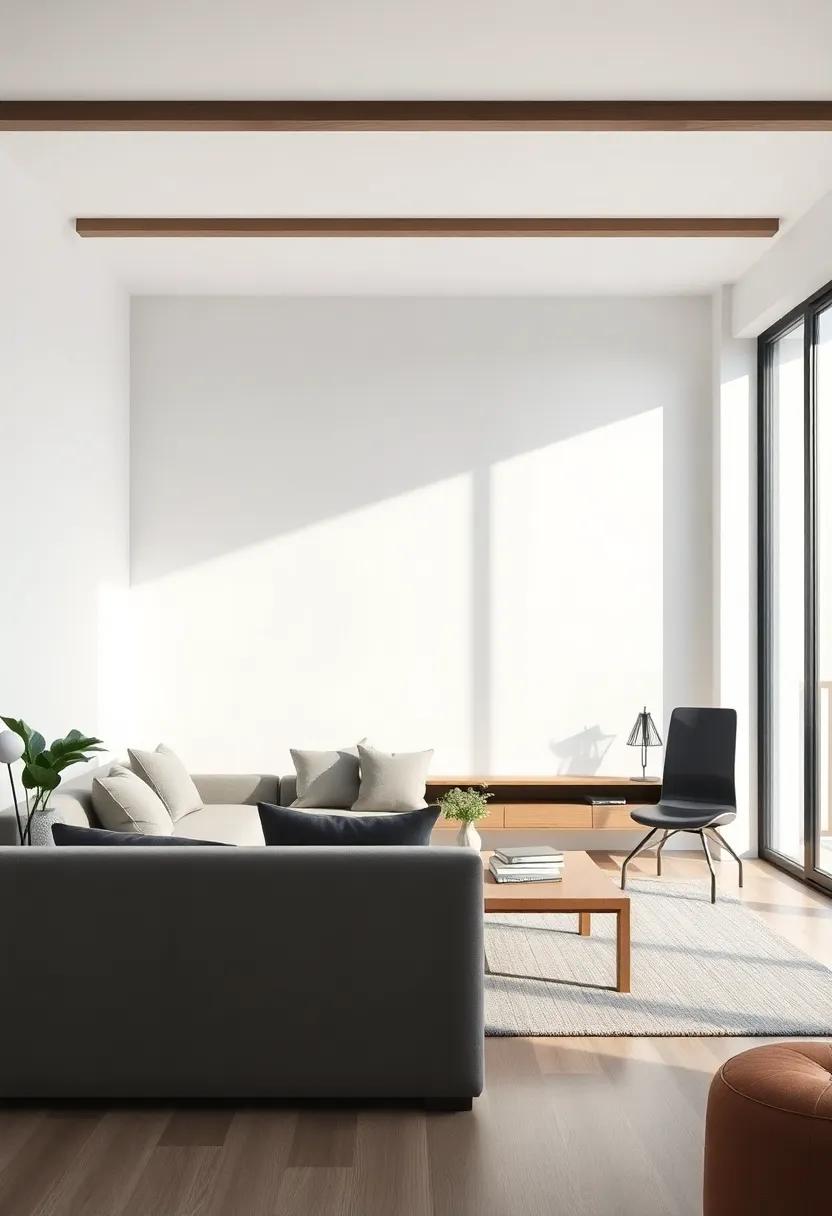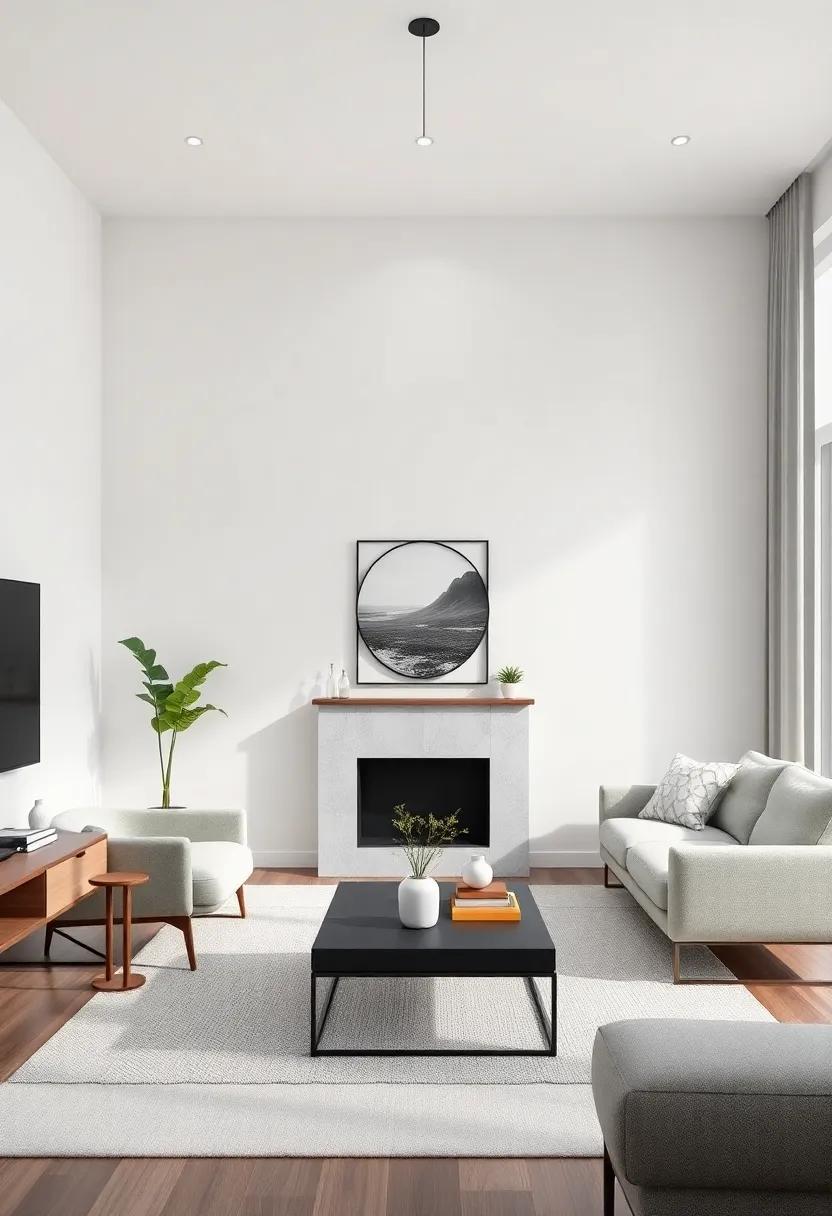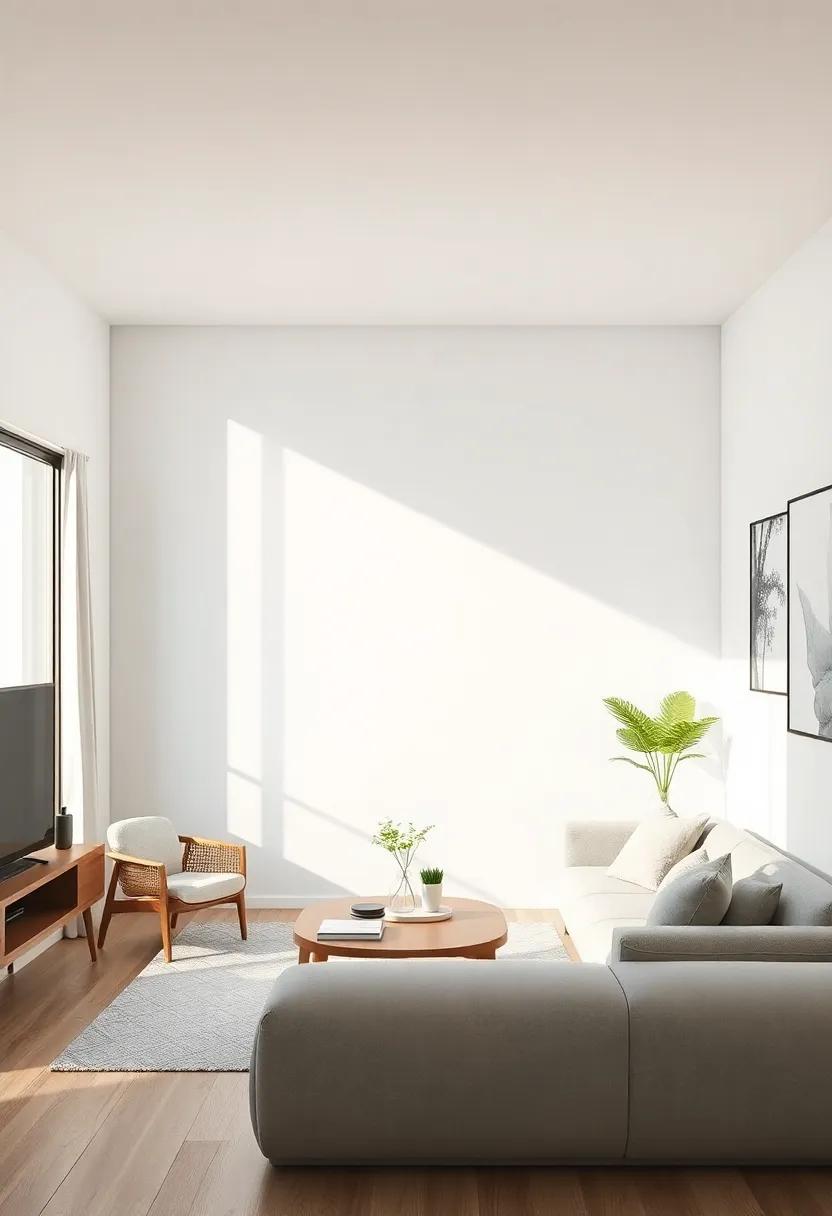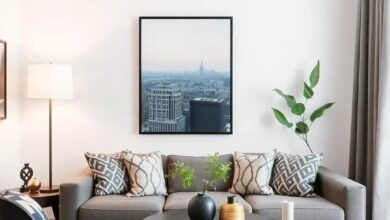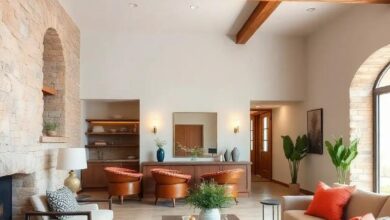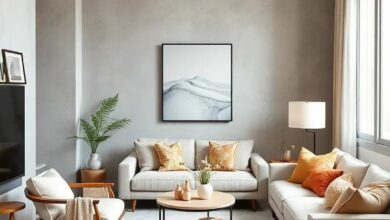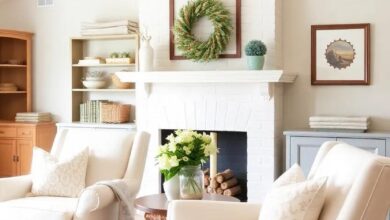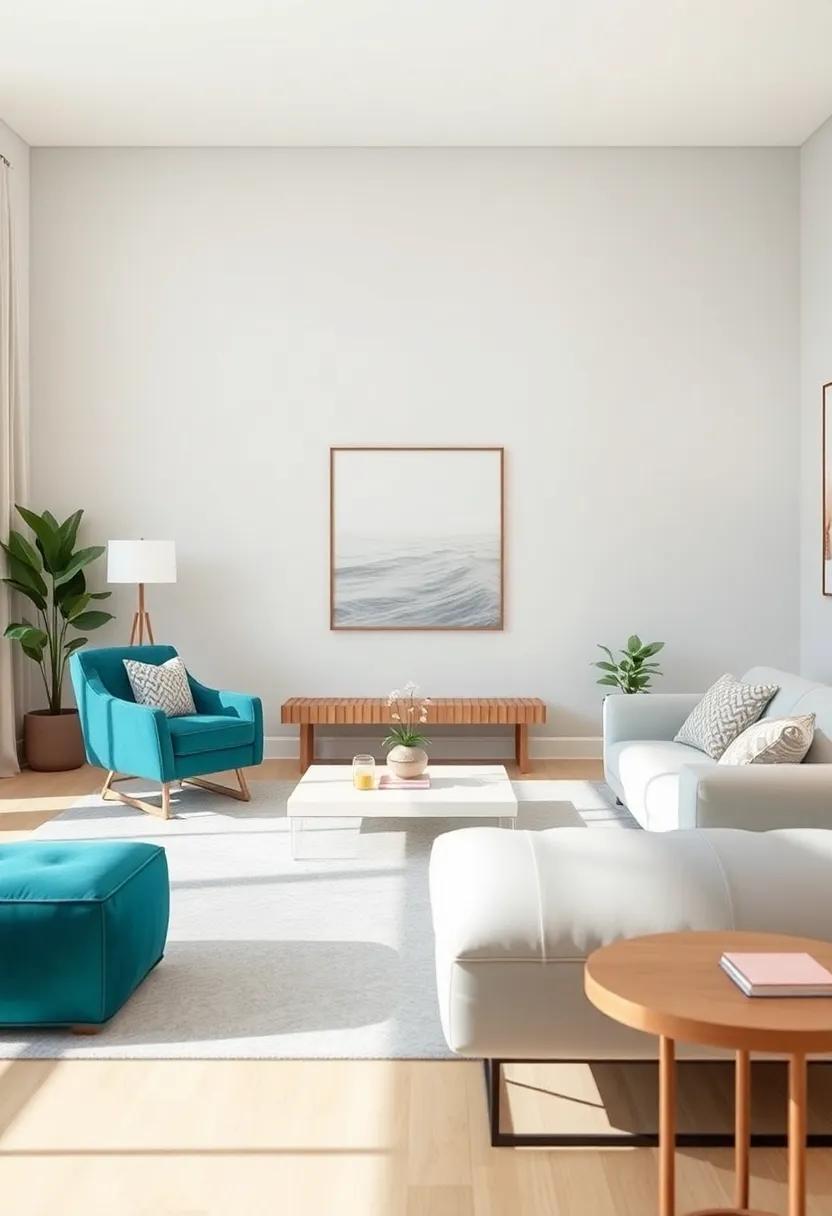
Maximizing Style: Creating a Focal Point in Your Small Living Room Design
In the realm of home decor, the living room holds a unique position as both a sanctuary for relaxation and a canvas for personal expression. Yet, for those navigating the challenges of small spaces, creating a harmonious living area can feel like an intricate puzzle. The key to transforming a compact room into a stylish haven lies in the art of creating a focal point. Whether through a statement piece of furniture, a vibrant work of art, or the strategic arrangement of textures and colors, establishing a visual anchor can not only enhance the aesthetic appeal but also optimize the functionality of a small living room. In this article, we will explore innovative strategies and design principles to help you maximize style while crafting that all-vital focal point, ensuring your limited square footage exudes character, comfort, and charm.
Embracing Color: Using Bold Hues to Create a Vibrant Centerpiece
when designing a small living room, incorporating bold colors can transform an or else bland space into a stunning focal point. Begin by selecting one or two vibrant hues to dominate your decor.Consider the following options for your centerpiece:
- Accent Walls: A striking paint color or a dramatic wallpaper effect can anchor the room and serve as a backdrop for your furniture.
- Statement Furniture: Opt for a bright sofa or coffee table that draws the eye and adds character without overwhelming the space.
- Art and Accessories: Introduce colorful artwork, cushions, and decorative pieces that complement your primary color scheme, creating harmony throughout.
To maximize the impact of bold hues, balance them wiht neutral tones in other areas of your design. This approach allows the vibrant elements to shine while preventing the space from feeling chaotic. Additionally, consider the following tips to enhance your bold color selections:
| Tip | Details |
|---|---|
| Layer Textures | Mix various materials to add depth and interest to your vibrant centerpiece. |
| Lighting Matters | Utilize natural light or strategic lighting to highlight your bold colors, ensuring they pop without clashing. |
Furniture Arrangement: Strategically Placing Pieces for Visual Impact
To create a visually appealing small living room, it’s essential to consider how each piece of furniture interacts with others in the space. Start by identifying a focal point, such as a fireplace, a large window, or an eye-catching piece of art. Arrange the largest furniture pieces around this focal point to draw attention and create balance. For example, position your sofa facing the focal area, with side tables flanking it for symmetry. Utilize smaller furniture, like accent chairs or ottomans, to create a conversational grouping that invites interaction without overwhelming the space.This will not only optimize functionality but also enhance aesthetic appeal.
In a compact setting, employing clever strategies can enhance both style and comfort. Consider the following tips for optimal arrangement:
- Use Multi-Functional Furniture: Opt for pieces that serve more than one purpose, such as a coffee table with storage.
- Keep Pathways Clear: Ensure there’s enough space for movement to avoid a cramped feel.
- layer textures: Combine different materials, like wood, fabric, and metal, to create visual depth.
- Play with Scale: Incorporate a mix of larger and smaller items to maintain a dynamic look.
Additionally, a well-thought-out layout can maximize natural light and create an airy atmosphere. By positioning mirrors opposite windows or light sources, you can reflect brightness throughout the room.Here’s a simple representation of a potential furniture arrangement:
| Furniture | Placement |
|---|---|
| Sofa | Facing the focal point |
| Accent Chairs | At an angle for conversation |
| Coffee Table | Centered in front of the sofa |
| Bookshelf | Against a wall for vertical space |
Statement Furniture: Choosing Unique Pieces that Draw Attention
Incorporating statement furniture into your small living room can instantly elevate the overall aesthetic while creating a captivating focal point.Opting for a bold piece, such as a vibrant sofa, an oversized armchair, or an intricately designed coffee table, can serve as an eye-catching anchor for the space. Consider the following options to make a memorable impression:
- Colorful Sofas: A bright hue can bring vibrancy to a neutral palette.
- Artistic Coffee Tables: Unique shapes or materials can serve both functional and decorative purposes.
- Accent Chairs: Look for chairs with unconventional designs or patterns to draw the eye.
When selecting your statement piece, think about scale and proportion, ensuring it complements rather than overwhelms the room. Layering textures and styles further enhances the visual appeal. A carefully chosen area rug can tie in colors and provide a cohesive look. Explore options such as:
| style | Material | Color Palette |
|---|---|---|
| Mid-Century Modern | Wood, Fabric | Warm Tones, Teal |
| Industrial chic | Metal, Reclaimed Wood | Greys, Rustic Browns |
| Bohemian | Wicker, Cotton | Earthy Tones, Bright Accents |
Artwork as Focal Point: Showcasing Your Personality Through Art
Choosing the right artwork can transform a small living room into a vibrant expression of your personality. When selecting pieces, consider highlighting your interests, whether they stem from travel, literature, or personal hobbies. A few carefully chosen pieces can serve as conversation starters while creating an intimate atmosphere. Think about the following tips:
- Choose Bold Colors: Opt for artwork that brings energy to the room.
- Embrace Personal Taste: Invest in pieces that truly resonate with you; your home should reflect who you are.
- Play with Scale: Large artwork can draw attention and make the space feel bigger; smaller pieces can create a gallery effect.
Using art strategically can enhance your small living room’s aesthetic and functionality. Consider arranging artwork in a grid or a salon-style layout to maximize wall space effectively. If you want uniformity, stick to a similar style, or if you’re feeling adventurous, create a mix of frames and styles for an eclectic touch. here’s a simple table to illustrate some effective art arrangements:
| Arrangement Type | Effect |
|---|---|
| Grid Layout | Creates a clean, organized look. |
| Salon Style | Displays a curated mix,adds personality. |
| single Statement Piece | Draws focus, becomes the focal point. |
Layering Textures: Combining Fabrics for Depth and Interest
To enhance the visual appeal of a small living room, consider the art of layering textures.Combining different fabrics adds depth and intrigue,transforming a basic space into a chic sanctuary.Start by selecting a color palette that complements the overall aesthetic while allowing textures to shine through.Fabrics such as velvet, cotton, and linen can work harmoniously together, providing a rich sensory experience. Toss in a combination of luxurious throw pillows, a chunky knitted blanket, and a soft area rug to create an inviting atmosphere that encourages relaxation and engagement.
Incorporate various textures strategically to achieve a balanced look. For instance, a sleek modern sofa embellished with plush cushions can create a striking visual contrast. Use a wooden coffee table to introduce natural elements, paired with metallic accents like brass lampstands or decorative trays. Also consider layering window treatments: opt for sheer curtains under heavier drapery to play with light and shadow. Here’s a quick guide to some effective fabric combinations that can elevate your living space:
| Primary Fabric | Complementary Textures |
|---|---|
| Velvet | Silk and Leather |
| Linen | Knitted Wool and Canvas |
| Cotton | Jute and Chenille |
Lighting Magic: Illuminating Your Space with Thoughtful Fixtures
When it comes to small living rooms, each detail counts, and lighting is one of the most effective ways to enhance both function and aesthetics. Statement fixtures, such as a beautifully crafted chandelier or a sleek floor lamp, can draw the eye and serve as a captivating focal point. Consider selecting a fixture that complements your room’s color scheme while also catering to the style you wish to portray—be it modern, rustic, or eclectic. Additionally, layering different types of lighting—ambient, task, and accent—can create a dynamic atmosphere that transforms the space and highlights your chosen focal point.
To further accentuate the character of your small living room,pay attention to the placement and style of your lighting. A well-placed table lamp on an end table or a striking pendant light over a seating area can define sections within the room and enhance the overall layout. you might consider the following factors when choosing lighting:
- Scale: Ensure that the size of the fixture matches the dimensions of the room.
- Color Temperature: Use warm light tones to create a cozy environment.
- Dimmer Switches: Install dimmers to easily adjust lighting intensity based on mood and occasion.
Here’s a quick reference table to help guide your lighting choices:
| Fixture type | Purpose | ideal Placement |
|---|---|---|
| Chandelier | Highlight the room’s central theme | Above seating areas |
| Floor lamp | Add warmth and height | Next to seating |
| Wall Sconces | Provide accent and ambient light | Along walls or above art |
Area Rugs: Defining Spaces and Enhancing Style
Integrating area rugs into your small living room can remarkably transform the overall aesthetic. These versatile pieces act as anchors that ground the space, creating a defined area for relaxation or social interaction. When selecting a rug,consider opting for one with bold patterns or vibrant colors to serve as a striking centerpiece. This draws the eye and can enhance the perceived size of the room by establishing a visual focal point.To further maximize this effect, choose a rug that complements the furniture and wall colors, ensuring harmony while also injecting personality into the space.
When arranging furniture, aim to incorporate the area rug into the layout strategically. A few effective tips include:
- Consider size: Ensure the rug is large enough for the front legs of your furniture to sit on it.
- Layer textures: mix different materials in your decor for depth and interest.
- Contrast with lighting: Use lighting to highlight the rug’s design and enhance its colors.
Utilizing a table to showcase different rug styles and their impact can also provide a clearer insight. Here’s a quick comparison:
| Rug Style | Impact on Space | Best For |
|---|---|---|
| Geometric | Creates a modern look | Minimalist designs |
| Vintage | Adds warmth and character | Eclectic settings |
| Natural fibers | Brings an organic feel | Coastal or bohemian decor |
Mirrors for Depth: Expanding Spaces with Reflective Surfaces
Reflective surfaces hold the key to transforming any small living room into a haven of light and spaciousness.When strategically placed, mirrors can serve not only as functional pieces but also as artistic focal points. Consider using large wall mirrors that reflect natural light from windows, effectively enlarging the perceived dimensions of the room. Additionally, decorative mirrors with unique frames can become conversation starters and add a touch of personality, making the space both stylish and inviting.
To further enhance the illusion of depth, think about incorporating a variety of reflective elements throughout your design. Here are a few suggestions to create a harmonious layout:
- Mirrored furniture: Such as coffee tables or side tables that can reflect surroundings.
- Accent wall mirrors: Position them opposite to each other to multiply light and visuals.
- Artwork with metallic finishes: Introduce pieces that incorporate metals for additional gleam.
| reflective Element | Impact |
|---|---|
| Large Wall Mirror | Creates an illusion of larger space |
| Mirrored furniture | Reflects light and adds glamour |
| Accent Mirrors | Enhances depth and style |
Plants and Greenery: Bringing Nature Indoors for Fresh Vibes
Incorporating greenery into your small living room can dramatically enhance the overall aesthetic, making the space feel both fresh and inviting. Opt for statement plants that can serve as focal points, such as a tall fiddle leaf fig or a sculptural snake plant. Position these plants strategically to draw the eye upward and create the illusion of a larger space. Choose pots with bold designs or colors that complement your existing decor, enhancing both form and function.
To create a harmonious atmosphere, consider grouping various smaller plants on shelves or side tables. This layering technique not only adds visual interest but also introduces a variety of textures and colors. Here are some ideas for plant combinations:
- Succulents: Great for sunny spots and easy care.
- Ferns: Perfect for adding lush greenery in low-light areas.
- Pothos: Excellent for trailing down from shelves.
Additionally, using a wall-mounted planter or a vertical garden can maximize your space while creating a striking feature. Explore options that blend with your decor style,whether it’s modern,bohemian,or minimalistic. The right choice can transform your small living room into a vibrant sanctuary.
The power of curtains: Using Drapes to Frame and Highlight
In a small living room, space can often feel tight, and achieving an inviting ambiance can be a real challenge. Though, by selecting the right drapes, you can transform your walls into a stunning backdrop that adds depth and elegance to the room.Opt for light, airy fabrics that allow natural light to filter through while still providing privacy. Consider pulling your drapes to the sides of your windows to create the illusion of taller ceilings and spaciousness. Layering sheer curtains underneath heavier drapery also offers versatility in control of light and creates an appealing contrast between textures.
Drapes can also serve as powerful design elements to emphasize certain features in your small living room. Choose bold patterns or vibrant colors that resonate with your personal style and highlight key focal points, such as a striking piece of furniture or artwork. When paired with thoughtful accessories, like bold cushions or a well-chosen area rug, these drapes can effectively draw the eye and create a cohesive look. To assist in your decision-making, here’s a simple table that outlines the impact of different curtain styles:
| Curtain Style | Impact |
|---|---|
| Sheer Curtains | brings lightness and airy feel |
| Blackout Drapes | Enhances privacy and reduces glare |
| Patterned Drapes | Injects personality and visual interest |
| Floor-Length Drapes | Creates an illusion of height |
Small Scale Solutions: Selected Decor for Maximal Impact
Transforming your small living room into an inviting space often hinges on the strategic use of select decor pieces. Focus on items that not only reflect your personal style but also serve specific functions. As an example, consider a bold art piece as a captivating focal point; it can draw the eye and create a sense of vibrancy. Pair this with multi-functional furniture, such as a stylish ottoman that doubles as storage, accentuating both aesthetics and practicality. here are a few decor elements that can maximize impact:
- Mirrors: Use large mirrors to create the illusion of depth and spaciousness.
- Accent pillows: Choose vibrant patterns to add color and comfort to your seating.
- Statement Lighting: Install a unique pendant light or striking floor lamp to enhance ambiance.
Incorporating textiles can bring warmth and texture to your living area. Soft area rugs define spaces and add a layer of coziness, especially in small rooms. You might opt for a striped or geometric patterned rug that draws the eye and complements other design elements. Additionally, consider creating a cohesive look with color-coordinated cushions and throws.To illustrate effective combinations, refer to the table below for inspiration on color pairings:
| Color Pairing | Accent Element |
|---|---|
| Teal & Mustard | Cushions |
| Coral & Gray | Throws |
| Charcoal & White | Area Rugs |
Accent Walls: creating Visual Interest Without Overwhelm
One of the most impactful ways to enhance the visual dynamics of a small living room is through the strategic use of accent walls. By selecting a bold color or captivating pattern, you can instantly create a focal point that draws the eye without overwhelming the space. Consider the following options when choosing your accent wall:
- Color Contrast: Opt for a vibrant hue against neutral tones to make a statement.
- Textured Finishes: Incorporate materials like wood, stone, or wallpaper to add depth.
- Artwork Display: Create a gallery wall with framed art or photographs for a personal touch.
To ensure that your accent wall enhances rather than dominates, it’s critically important to balance it with complementary elements in the room. Using lighter or softer furnishings can maintain harmony, allowing the accent wall to shine through without causing visual clutter. Here’s a quick reference guide for selecting the right balance:
| Element | Recommended Style |
|---|---|
| Furniture | Light-colored or minimalist designs |
| Textiles | soft fabrics in neutral shades |
| Accessories | Simple decor items that complement the accent |
Building Levels: Using Staggered Heights for Dynamic Design
Incorporating staggered heights in your living room can transform a plain space into a visually captivating environment. By utilizing shelves, furniture, and decor items of various heights, you create a multi-dimensional experience that draws the eye upwards, enhancing the overall perception of size.Consider installing floating shelves at different levels to display books, plants, or art pieces. This not only adds visual interest but also allows for an organized yet dynamic arrangement, making even a small living room feel expansive.
To further enhance the staggered height concept, mix tall and low furniture pieces to create balance and rhythm. Opt for sofas with low profiles, paired with tall armchairs or an edgy floor lamp.A well-placed coffee table can serve as an anchor amidst this variation. Here’s a simplified layout to envision the dynamic interplay of heights:
| Furniture Piece | Height (inches) | type |
|---|---|---|
| Sofa | 30 | Low Profile |
| Armchair | 40 | Tall |
| Coffee Table | 18 | Standard |
| Floor Lamp | 60 | Tall decor |
Accessories that Pop: Curating Decorative Elements with purpose
In a small living room,every piece of decor matters,and selecting accessories that create a cohesive narrative can elevate your space dramatically. Consider incorporating art pieces,statement plants,and textiles that resonate with your personal style while serving a specific purpose.Use vibrant throws and decorative cushions to add layers and color.Opt for slim-profile furniture that doesn’t overwhelm the room but instead allows your accessories to stand out and shine. The idea is to create a conversation among these elements, inviting guests to explore different textures and hues without feeling cluttered.
When curating your accessories, think about the balance between form and function. For instance, a stylish coffee table can host an array of decorative items while still being practical for everyday use. Include pieces like a chic tray for organization or artistic coasters that add to the aesthetic. A carefully chosen console table, adorned with a few curated items, can also become a great focal point. here’s a quick guide to help you decide on complimentary accessories:
| Accessory Type | Purpose |
|---|---|
| art Prints | Adds character and visual interest to walls. |
| Plants | Brings life and improves air quality. |
| cushions | Offers comfort and color variation. |
| Mirrors | Creates the illusion of more space. |
Creating zones: Functional areas That Enhance Flow and Style
To create a harmonious flow in your small living room, consider implementing distinct functional areas that cater to various activities. By establishing zones, you can enhance the usability of the space while maintaining a cohesive style. Below are some effective strategies for defining these areas:
- Reading Corner: Incorporate a comfortable chair or a small loveseat paired with a stylish side table and a lamp for ideal lighting.
- Conversation Nook: Use a small, circular table with two accent chairs that encourage kind gathering while conserving space.
- Entertainment Area: Position your TV and media console strategically to avoid clutter, ensuring they are visually integrated with the rest of the décor.
Thoughtful zoning not only maximizes the functionality but also adds an element of design finesse. you can further enhance the dynamic of each area through color and texture variation, guiding the eye around the room.Incorporating the following elements can subtly differentiate zones:
| Element | Purpose |
|---|---|
| Rugs | Define different areas and provide warmth. |
| Lighting Fixtures | Create ambiance and improve functionality. |
| Bookshelves or Art Pieces | Act as visual dividers while adding character. |
Maintaining Scale: Keeping Proportions Balanced in Small Spaces
When designing a small living room, it’s essential to create a sense of balance and scale. This can be achieved by carefully selecting furniture and decor that complement each other in size and style. Consider these tips for maintaining proportions:
- Choose Multi-functional Furniture: opt for pieces that serve multiple purposes, such as a coffee table with built-in storage or an ottoman that doubles as seating. This not only saves space but keeps the room organized.
- Incorporate Vertical Lines: Use tall bookshelves or vertical artwork that draw the eye upward, giving the appearance of a more spacious room while enhancing the vertical scale.
- Limit Oversized Items: avoid filling the space with bulky furniture; rather, choose sleek, modern designs that feel light and airy.
Creating a focal point in a small living room can be an artful way to define the space without overwhelming it. Here are a few creative ideas for establishing that perfect center of attention:
| Focal Point Ideas | Description |
|---|---|
| Statement Art Piece | Hang a large, vibrant painting or an eye-catching wall sculpture to draw attention and set the tone for the room. |
| Bold Lighting Fixture | A chic chandelier or an oversized pendant light can serve as both functional and decorative focal points. |
| Feature Wall | Paint one wall in a bold color or apply patterned wallpaper to create a striking backdrop for furniture placement. |
Minimalist Approach: Less is more in Truthful Design
Embracing a minimalist mindset can transform your small living room into a haven of calm and sophistication. By stripping away unnecessary clutter, you not only create visual harmony but also allow your carefully chosen focal points to shine.Consider integrating the following elements:
- Neutral Color Palette: Use soft tones to foster a serene atmosphere, making the space feel larger.
- Statement Furniture: Select one or two pieces that stand out, like a chic armchair or a unique coffee table.
- Artful Accents: Incorporate a single piece of large artwork or a gallery wall featuring a cohesive theme.
When designing with less in mind, every element should serve a purpose and contribute to the overall cohesion of the space. Create zones within your small living room that highlight functionality while maintaining elegance. Here’s a simple framework to envision your layout:
| Zone | function | Suggested Elements |
|---|---|---|
| Seating Area | Relaxation | Compact sofa, accent chair |
| Reading Nook | Quiet Time | Bookshelf, floor lamp |
| Display Corner | Visual Interest | Small console, potted plants |
cohesive Color Palettes: Unifying Your Room Through Color Choices
When it comes to enhancing the visual appeal of your small living room, a well-thought-out color palette can work wonders. By selecting complementary shades, you create a seamless flow that connects various elements within the space. Consider the following tips for curating a cohesive palette:
- Limit Your Colors: stick to a maximum of three main shades to avoid overwhelming the room.
- Mix Textures: Incorporate different materials in your chosen colors, such as fabrics, paint, and furnishings.
- Test Swatches: Sample paint or fabric swatches in your space to see how they play with natural and artificial light.
To help visualize your chosen colors and their impact, you might find it useful to create a palette table. This simple chart can be a valuable reference guide when shopping for decor:
| Color | Hex Code | Suggested Use |
|---|---|---|
| soft Blue | #A4C8E1 | Accent Walls |
| Warm Gray | #D7D7D7 | furniture |
| Earthy Terracotta | #C55A24 | Decor Items |
Visual Pathways: Guiding the Eye with Thoughtful Design Elements
Designing a small living room offers a unique opportunity to express personal style while overcoming spatial limitations.One effective method for enhancing visual flow is by creating a clear focal point. This could be an eye-catching piece of art, a statement light fixture, or a beautifully designed piece of furniture. Consider these elements to draw attention:
- Bold Colors: Utilize a vibrant color palette for rugs or cushions to naturally draw the eye.
- Name it! Always consider how each element interacts; bold pieces should be strategically placed, ensuring they don’t overpower the room.
- Layered Textures: Combine different materials to create a tactile experience, guiding the eye in different directions.
In addition to selecting standout elements, utilizing the space effectively can enhance the overall ambiance. arrange furniture strategically, ensuring that the layout allows for easy movement while framing your central focus. Tables positioned artfully can not only serve a purpose but also reflect design coherence. Here’s a useful guideline:
| Element | Placement Tips |
|---|---|
| Seating | Arrange in a circular formation to promote conversation. |
| Accent Table | Be sure it complements your focal point without stealing the show. |
| Art Pieces | Hang at eye level to enhance visibility and engagement. |
Sensory Details: Engaging All Senses for a Welcoming Atmosphere
To cultivate an inviting environment in your small living room, it’s essential to engage all senses—sight, sound, smell, touch, and taste.Start with visual elements like striking artwork or a vibrant area rug that instantly draws the eye, serving as a centerpiece for the space. Layering different textures—such as plush throw pillows, sleek furniture, and natural fabrics—can create a tactile experience that invites guests to linger. Additionally, consider your lighting choices; warm, dimmable lights can establish a cozy ambiance, while strategically placed lamps can highlight specific design features, enhancing the aesthetic appeal.
Sounds play a crucial role in crafting a welcoming space. Soft,calming music in the background or the gentle hum of a textural water feature can heighten the atmosphere. Aroma is equally significant; incorporating scented candles or essential oil diffusers can create a soothing olfactory experience.For a multi-sensory approach, think about integrating a small refreshment station with flavored teas or aromatic coffee, ensuring your guests feel pampered.Here’s a simple table summarizing key sensory elements:
| Sense | Element | Example |
|---|---|---|
| Sight | Visual Focal Point | Vibrant Artwork |
| Sound | Background Music | Soft Jazz |
| Smell | Aromatic Enhancements | Scented Candles |
| Touch | Textural Elements | Plush Pillows |
| Taste | Refreshment Station | Herbal Teas |
Closing Remarks
crafting a captivating focal point in your small living room isn’t merely an aesthetic choice; it’s a transformative approach that elevates your entire space. By thoughtfully selecting elements that resonate with your personal style—be it a bold piece of art, a striking piece of furniture, or an innovative layout—you can create an inviting atmosphere that reflects your personality while optimizing functionality. Remember, the beauty of a small space lies in its potential; it’s about making intentional choices that harmonize and enhance your living environment. As you embark on your design journey, embrace creativity and inventiveness, allowing your small living room to become a canvas for your unique vision. With the right focal point in place,you’ll not only maximize your style but also cultivate a cozy sanctuary where memories can flourish. Happy decorating!
As an Amazon Associate I earn from qualifying purchases.
